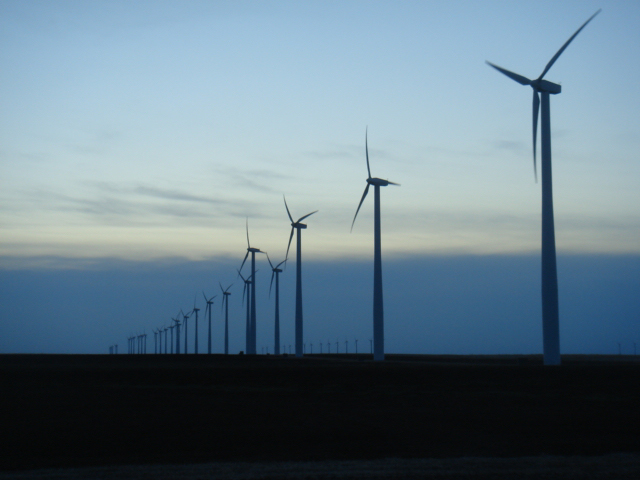-Goethe
Headlines in Europe today are proclaiming that a “New World Order” is upon us, heralded by unprecedented and coordinated multi-government intervention in financial markets. It seems that socialism has returned from exile, with the taxpayers now owning a bunch of worthless debt. Simple-minded progressives, thinking their long drought is over, relish the thought of paying $69.95 for their next cappuccino if it means they can start planning a “Green” New Deal.
Apparently a few facts have slipped by our hopeful friends: governments everywhere operate for the benefit of capitalists; the massive bailouts we’ve seen this fall have been done entirely on their behalf. Private wealth still owns almost everything, and a money supply whose fundamental concepts are debt and the rate of interest isn’t going away anytime soon. And how’s the green revolution gonna happen with no meaningful price on carbon?
Just what do progressives have to show for their continuing submission to the rule of private finance? How about a debt that can never be repaid and a planet that can never be repaired. Regardless, Al Gore’s group WeCanSolveIt is running a national campaign saying America can switch to 100% carbon-free energy in ten years. Let’s look at a couple of points that show why this kind of progressive optimism is not just wrong-headed, but fundamentally irresponsible:
1. Drastic carbon emissions reductions are impossible without “something entirely different”.
2. The UN’s stabilized world population scenario post-2050 is a farce.
Why capitalism can’t stabilize GHG concentrations at or below 450 ppm:
Writing in the journal Science in 2004, Princeton researchers Robert Socolow and Stephen Pacala made a name for themselves by breaking up the overwhelming problem of dealing with global warming into nifty, not-so-little slices called stabilization wedges. Since then, progressives have clung desperately to their suggestion that the global economy could keep growing through 2050 and stabilize green-house gas (GHG) emissions at 2004 levels, by a 50-year effort to deploy a truly daunting list of “currently available” technologies. The key word in the last sentence is emissions.
Think of water running into a bathtub plugged with a leaky stopper. The ever-increasing flow out of the spout is emissions, and the water level in the tub is atmospheric GHG concentration. Socolow and Pacala showed that we would need a Herculean global effort just to let the water run steady while global growth continued thru 2050. Of course, we were already emitting more GHG’s than the ocean-forest drain could absorb, the excess filling the atmospheric tub.
I’ll try to make this as quick and painful as possible. In 2004, Pacala and Socolow concluded that heroically limiting emissions to the then current 7 gigatons carbon (GtC) per year over 50 years might keep the tub level around 500 ppm by 2054. Now just four years after their first paper, the global growth monster is already emitting 8.5 GtC annually. At this rate, the tub could reach 450 ppm as soon as 2030. So, we’ve got perhaps twenty years to get the global faucet down to a trickle. Note the worried looks settling onto the “we can grow our way out of global warming” crowd.
A year ago, in a National Geographic article titled “Carbon’s New Math”, Bill McKibben characterized the kind of effort needed to keep the tub below 450 ppm while maintaining today’s global population and economic growth status quo:
“As precedents for such collective effort, people sometimes point to the Manhattan Project to build a nuclear weapon or the Apollo Program to put a man on the moon. But those analogies don’t really work. They demanded the intense concentration of money and intelligence on a single small niche in our technosphere. Now we need almost the opposite: a commitment to take what we already know how to do and somehow spread it into every corner of our economies, and indeed our most basic activities. It’s as if NASA’s goal had been to put ALL of us on the moon.”
Just what are those things that we “already know how to do”? Joseph Romm, the author of Hell and High Water, has provided a list of 14 wedges that would reduce global emissions by 14 GtC upon completion of ALL of them, while theoretically maintaining today’s economic growth rate. (“Business as usual” puts us well over 14 GtC annually by the time we hit 450 ppm.) To give you an idea of the scale of these projects, 1 GW is roughly equivalent to a single mid-sized power plant:
“One wedge of vehicle efficiency — all cars getting 60 mpg, with no increase in miles traveled per vehicle.
One of wind for power — one million large (2 MW peak) wind turbines.
One of wind for vehicles — another 2000 GW wind. Most cars must be plug-in hybrids or pure electric vehicles.
Three of concentrated solar thermal — about 5000 GW peak.
Three of efficiency — one each for buildings, industry, and cogeneration/heat-recovery for a total of 15 to 20 million gwh.
One of coal with carbon capture and storage — 800 GW of coal with CCS. [Note this] means storing the emissions from 800 large coal plants (4/5 of all coal plants in 2000) — a flow of CO2 into the ground equal to the current flow of oil out of the ground. That’s right — you have to re-create the equivalent of the planet’s entire oil delivery infrastructure.”
One of nuclear power — 700 GW plus 10 Yucca mountains for storage.
Two of forestry — End all tropical deforestation. Plant new trees over an area the size of the continental U.S.
One of soils — Apply no-till farming to all existing croplands.
That should do the trick. And yes, the scale is staggering.”
To read Romm’s posts, google: “Is 450 ppm (or less) politically possible” and take a look at Parts 1 and 2. I can’t resist adding a few more notes from my own research:
Two million giant wind turbines would cost over $5 trillion just for hardware and installation and assumes we’d find enough metal alloy for 6 million turbine blades. Not included: 300,000 square miles of land acquisition for the wind farms (areas of Utah, Colorado and Arizona combined.)
Three wedges of concentrated solar thermal would cost about $18 trillion.
Adding 700 GW of nuclear power compares with today’s 350 GW total global nuclear capacity. This would be on top of the need to replace most of the existing reactors that will go out of service in the next 20 years.
You can look at the list and judge for yourself whether you think it’s environmentally, technically, materially, or financially possible in today’s world. I think it’s pretty clear: honesty now demands that the progressive alliance with capitalism come to an end. We’re not going to grow our way to stabilization at 450 ppm. And now, the coup de grace, a quote from this year’s James Hansen, et al bombshell:
“If humanity wishes to preserve a planet similar to that on which civilization developed and to which life on Earth is adapted, paleoclimate evidence and ongoing climate change suggest that CO2 will need to be reduced from its current 385 ppm to at most 350 ppm.”
Again I ask, had enough yet optimists? What more evidence do you need? Global capitalism is no match for global warming.
At least Bill McKibben had the guts to title the first chapter of his new book “After Growth”, but most environmentalists still won’t publicly admit that global warming has us licked. Case in point: Joseph Romm’s political advocacy vs. real understanding. It’s hard to criticize him because here’s a scientist who’s had the courage to write a strong book as well as lots of great blog posts clearly showing what we’re up against. But just like mainstream environmentalists, as soon as he starts talking politics, the message comes out sounding like Sarah Palin cheering for her kid’s hockey team, down 8-0 then later 14-0 in the third period.
In Hell and High Water, Romm wrote that it is merely “American conservative leaders” opposing 550 ppm and 8 wedges, and noted that “you may think some [wedges] are implausible, but none of them are technically impossible right now.” In April 2008, he acknowledged the new goal of 450 ppm and 14 wedges, but still maintained that “450 ppm or lower is certainly achievable from an economic and technological perspective”. For Joseph Romm, Al Gore, and most progressives, only politics stands in the way of meaningful action on global warming. How do they figure that?
Here’s my guess: the world that environmentalists imagine to be just around the corner is ruled by a single political entity called the “United Nations Global Federation”. (Oops, I see a lot of enviros wincing that I just let the cat out of the bag!) Ah, now we see what keeps the optimists going. In their world, all you have to do is get the science right and soon 6.5 billion humanoids are following in lock-step.
But the real world muchachos, is one that guards “economic freedom”, i.e., global wealth in the hands of the few, spurring a strategic shootout over dwindling resources to protect private markets, vast urban populations with no choice but to long for the American way of life, and which have not surprisingly flunked their final science exam. How many people really think that a world like that is going to sing “Kum-bay-ya” around the campfire without cataclysmic wars first?
Young people, because they have the right to choose a way of life that separates their future from that of the urban masses, need to be told the truth. When are we going to start giving them that choice?
The Bursting of the Progressive Population Bubble
Not only is hopeless optimism getting in the way of young peoples’ understanding, but it also suppresses social movements away from capitalism. Progressive surrender is needed before the growth monster loses its credibility with the center. Since the Reagan era, when capitalism finally turned back the counter-culture, progressives have been sleeping with the monster rather than refusing to cooperate, as honesty would dictate. If they would just open their eyes and give up, for goodness sake, the real battle can begin. Yeah, it’s a stupid hope, I know.
Anybody who wants to debunk the progressive view need look no further than the United Nations and its report titled (get this) “World Population to 2300”. In it, the UN lays out what is supposed to be our rationale for hope: global population will not increase forever, but will top out in 2050 at about 9 billion, then gently decrease to 8.5 billion over the following century, then gradually increase to 9 billion again by 2300. Just makes you want to jump for joy doesn’t it?
What’s most striking about the report is the notion that in the first half of the 21st century, we are experiencing the most rapid population growth rates that humanity ever has seen and (supposedly) ever will see. Given the UN’s hoped for fertility declines in the Third World, we are now just four decades away from centuries of social harmony and stability. You’ve gotta hand it to the optimists: when they dream, they dream big.
But unfortunately for them, the rest of us can think, and the UN’s population scenarios are begging to be torn apart in their post-2050 vision. Most importantly, what about capitalism? What about endless growth? How will capital markets function when global populations are steady or declining?
I researched these questions and came to this conclusion: if the experts have figured this out, they’re keeping quiet about it, because economic theory sure makes the “soft landing” scenario look like nothing more than a sales pitch. Of course, as I mentioned above, our fearless optimists might be assuming that the UN will be running the world by 2050, planning our happiness for centuries to come. But remembering Saddam setting fire to his oil wells in 1991, something tells me the capitalists won’t be giving up before inducing Armageddon.
So I think we complete the job of undermining the optimists just by proving that capitalism can’t long survive stable or declining populations. The forward-looking nature of capital markets is probably all we need to remember here. Investors would have to be convinced that unlimited opportunity exists even when the number of consumers isn’t growing. Could that work? No, because no matter how much capital is leveraged for productivity, workers’ annual income and spending would have to continually accelerate, not just grow. There’s a limit there, and investors would know it first.
In case you think I’m just pulling your leg, here’s a quote from an opinion piece titled “Incredible shrinking countries” in The Economist, Jan 5 2006, a rather flippant but revealing comment about what happens when you have ever fewer people earning and spending money in a capitalist economy:
“as labour becomes scarcer, and pressure to introduce new technologies to boost workers’ efficiency increases, so the productivity of labour may rise faster. Anyway, retirement ages can be lifted to increase the supply of labour even when the population is declining.”
Of course, you could have machines doing most of the producing AND consuming, but even progressives would have to admit that’s not a very optimistic scenario.
More evidence that capitalism doesn’t want to think about stable populations comes from one David L. Wiesen, writing for the MIT alumni journal in the fall of 2003. Mr. Wiesen clearly sees the problem here and was sufficiently concerned to challenge to the MIT community to spend some time and money looking at it. I recommend reading his article (1), as it’s the most frank discussion of the issue that I could find. I asked him via email whether anyone had responded to the challenge. He replied that he received numerous responses expressing interest in the article, but that no formal studies emerged.
The reason for that is obvious. The “soft landing” scenarios are not only unlikely, but implausible as well. As you would expect from a political body making predictions, the UN’s population projections are just wishful thinking by the only organization that has to answer publicly for the squalor and oppression of the Third World.
That problem of vast inequality, and the UN’s insistence that population would eventually stabilize, is at the root of progressives’ refusal to talk about Earth’s human population problem. But they should see now why capitalism will be steering away from the UN’s vision toward something it knows a lot more about, like boom and bust forever. As long as Adam Smith’s followers are running the show, humanity’s future is one of continuing population growth in the face of war, famine, disease, economic collapse, and finally, global ecological disaster.
As they sheepishly move their kids towards the sinking ship’s deck rails, progressives may someday recall with sorrow what they used to know back in the 1960’s:
Our collapse has come about because of a foolish belief that capitalism is exempt from the laws of ecology which have governed human existence for millions of years. The people of the Third World are descended from tribes that, not so long ago, lived sustainably with their environments. It was Western progressive thought, and its insistence that we could “raise” native peoples’ standard of living, that covered for the capitalist theft. We evicted Third World people from their homelands, sent them off to urban slums, claimed ownership of their resources, and proceeded to rape their land for all it was worth.
C’mon “progressives,” give up already. We in the West ARE the problem. Since we never really figured out how to live with nature, then it’s fair to say we haven’t brought anything of lasting value to the human experience. It may be too late for much else, but at least let’s try to do the right thing morally.
Like the song said: It belongs to them, let’s give it back.
Notes:
(1) “The Economic Effect of Population Decline: A Subject for Study”, What Matters, MIT Alumni Association, November 2003, David L. Wiesen, http://alum.mit.edu/news/WhatMatters/Archive/200311/






















One Response
Stay in touch with the conversation, subscribe to the RSS feed for comments on this post.
Doug’s comments may seem fierce, but that’s because mainstream environmentalism and for that matter the Democratic Party, have caved into globalization so completely. Ed Abbey, Gary Snyder, and the now classic study, “The Limits to Growth,” said much the same thing in the 1960s and early 1970s.
The progressives have done backslid. That’s the problem.